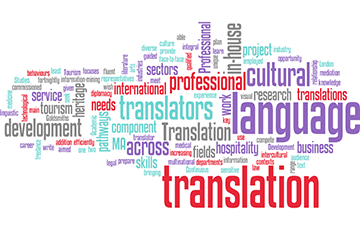Though often mistaken for its written counterpart: Translation…Interpreting is an art unto itself. As we previously discussed, Interpreting is the verbal relaying of information from one language to another. Interpreters are utilized to relay information between interested parties for all of the spoken languages of the world, including American Sign Language, which is “spoken” by the hearing impaired community.
Interpreters are utilized by all facets and walks of life, so to speak, and therefore must have an inherent, colloquial understanding of language and its dialects; and the keen ability to decipher meaning as opposed to the verbatim relaying of information. Common vernacular phrases, jokes, jargon and the like, are often very difficult to relay in different languages or dialects because of cultural differences and status quo norms; so interpreters must, in a split second, understand and convey the essence of what is being said as opposed to exactly what is said.
For instance, the English phrase, pulling your leg means that someone is teasing or attempting a sarcastic or facetious joke. If one were to interpret this phrase into Spanish, one would not use the same terminology. In Spanish the phrase, tomando tu pelo would be used, which literally means taking your hair. Neither of these phrases involves the direct action that they reference, but rather, imply a colloquialism that has come to mean playing a facetious or sarcastic joke. Because spoken language is often less formal than written language, and is riddled with jargon, slang, and cultural colloquialisms, interpreting requires keen vernacular understanding of such phrases, regardless of the type of assignment.
Interpreting is used in a variety of fields, including recreation, business, and for legal proceedings. Interpreters escort families and dignitaries on trips for business and leisure; they interpret for multilingual business conferences, negotiations, and meetings; and they interpret for legal proceedings such as depositions, mediations, and trials. They are also used by schools to relay student information for non-English speaking, or hearing impaired parents. For each of these fields, an interpreter must carefully listen to, retain, process, and relay information between parties attempting to communicate, and must discern the attempted meaning of the information relayed.
While information may be scripted and or rehearsed for business conferences, most other fields of interpreting involve in the moment assessment that can prove rather challenging. This is especially true for Simultaneous Interpreting, which is spoken with only a split second delay after the originating language is spoken. This type of Interpreting is more difficult and often more costly than the other two types of Interpreting: Consecutive Interpreting and Chutocage Interpreting.
Consecutive Interpreting is interpretation which contains a pronounced delay after the originating language is spoken. This gives the interpreter a brief moment to assess and relay what was said. However, this is challenging as well, as the interpreter must accurately retain the information, and must, often, take copious notes to maintain the integrity of the interpretation.
The third type of Interpreting is Chutocage Interpreting or Whispered or Huddled Interpreting. This type, though more rare than the other two, can be utilized for gaming, leisure, and court Interpreting; or any event where an audible interpretation would disturb those nearby in a proceeding or event. Interpreter booths, microphones, and headsets can also be used to ensure that interpretation can be relayed without disturbing those who do not need it.
Besides vernacular understanding and information-retention complications, legal and medical matters provide yet another set of complications. Many states require certification of interpreters who interpret for court, legal, or medical related matters. This is to ensure that the interpreter is not only familiar with conversational jargon and vernacular word usage, but also with legal and/or medical terminology. In California, for instance, the twelve most-requested languages require certification for court related matters: Spanish, Mandarin, Cantonese, Armenian (Eastern and Western), Japanese, Korean, Portuguese, Russian, Tagalog, Arabic, Vietnamese and American Sign Language. Many states also require certification of medical interpreters as well so that pertinent health information is properly relayed. Certification processes, whether state or federal, medical or legal, ensure the ability and knowledge of an interpreter, and provide a standard for their respective industries.
Interpreting, with its multifaceted usage, enables the world to communicate both personally and professionally. Interpreting provides for, and ensures multicultural diversity for the inhabitants of the entire speaking world—whether they speak the little known African dialect of Wolof; the world’s most abundantly spoken (per capita) language, Mandarin Chinese; or the most universally spoken…English.
























